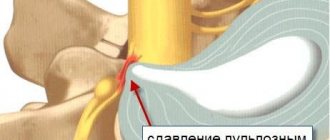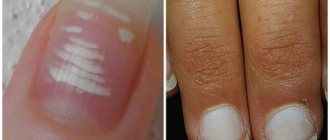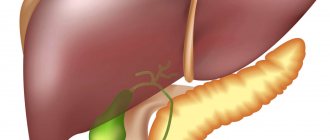Concept
Autoimmune anemia is a disease characterized by severe destruction of healthy red blood cells due to the aggressive effect of antibodies on them. These antibodies are produced by the body. This manifests itself in the form of pale skin, enlarged liver and spleen, pain in the lower back and abdomen, shortness of breath and other symptoms. To identify the disease, laboratory tests are needed. Treatment will be conservative, but sometimes surgery to remove the spleen is necessary.
Autoimmune anemia is observed infrequently. This disease occurs in 1 person out of 70-80 thousand. It is usually detected in women. Autoimmune anemia occurs in children and adults. Diagnosis is usually simple. Using routine blood tests, doctors can make a diagnosis. Recovery occurs in no more than 50% of cases. But with treatment with glucocorticosteroids, an improvement in health is observed in 85-90% of cases.
Code
In the ICD, autoimmune anemia is designated by code D59. This type of illness is associated with the appearance of antibodies to one’s own red blood cells. The disease can be acquired and hereditary. The destruction of red blood cells can be intracellular and intravascular.
Autoimmune hemolytic anemia (see ICD-10 code above) is a disease that should be identified as soon as possible. Often there are complex names for the disease. Autoimmune hemolytic anemia with incomplete heat agglutins is the term used for a common form of anemia.
Treatment
Autoimmune hemolytic anemia with warm antibodies
No anemia = no treatment
or
Hemoglobin is normal = there is nothing to treat.
Periodic monitoring of general blood tests and monitoring of well-being.
When hemoglobin drops, we begin to treat:
- glucocorticoids 1-1.5 mg/kg/day, expected increase in the number of reticulocytes after 7 days, hemoglobin increases by 2-3 g/l per week; when hemoglobin is above 100 g/l, gradually reduce prednisone by 50% of the dose over a period of time equal to the normalization of hemoglobin, then slowly reduce the dose over 3-4 months; often leave a small maintenance dose of corticoids
- immunosuppressants - artificially suppress the immune system to reduce the number of antibodies to red blood cells; prescribed when corticoids are ineffective; drugs - rituximab, cyclophosphamide, cyclosporine
- in case of stable hemolytic anemia with warm antibodies, the possible benefit of removing the spleen is considered, as a filter organ for red blood cells and as a focus of antibody synthesis; indications: no response to prednisone, a high dose of prednisone (10-20 mg) is needed to maintain remission, side effects of corticoids are pronounced
Causes
This anemia can be idiopathic (primary) or symptomatic (secondary). If the cause of the destruction of red blood cells can be identified, then this is secondary anemia. When the etiological factor is not identified, the anemia will be idiopathic.
Autoimmune hemolytic anemia develops:
- from lymphoblastic leukemia;
- exposure to radiation;
- malignant tumor;
- connective tissue diseases;
- past infections;
- autoimmune diseases not associated with damage to the hematopoietic system;
- type 1 diabetes mellitus;
- antibiotic treatment;
- immunodeficiency states.
The most common is the thermal form of anemia, when the internal environment of the body is at normal temperature, and the red blood cells contain class G immunoglobulins, components C3 and C4. Red blood cells are destroyed only in the spleen by macrophages.
The cold form of the disease may appear from an unknown cause. It also develops from infection, hypothermia, and lymphoproliferative diseases. In the latter case, people over 60 years of age become ill. Pathology in the body, in which red blood cells are destroyed, manifests itself after the temperature in the peripheral vessels drops to 32 degrees. Cold autoagglutinins are immunoglobulins M.
Hemolysis, which is observed in the spleen, is often very severe. Often the patient cannot be saved. The course of the disease from infection is usually acute. If the disorder appears from an unknown cause, then it will be chronic.
Paroxysmal cold anemia rarely occurs. Hemolysis occurs from exposure to cold. Even drinking cold drinks and washing hands in cool water poses a risk. This anemia often appears with syphilis. The severity of the disease can vary from case to case. Sometimes an incurable pathology develops, leading to death.
Symptoms
Autoimmune anemia in children and adults manifests itself in the form of 2 syndromes: anemic and hemolytic. The first syndrome can be identified:
- by pallor of the skin and mucous membranes;
- attacks of dizziness;
- frequent nausea;
- strong heartbeat;
- weaknesses;
- increased fatigue.
Autoimmune hemolytic anemia is detected:
- on light yellow or dark yellow skin;
- an increase in the size of the spleen;
- brown urine;
- the appearance of DIC syndrome.
Acute anemia usually occurs due to infectious infection of the body. Therefore, in addition to the symptoms of destruction of red blood cells, signs of the underlying disease appear.
Cold anemia has a chronic course. Under the influence of low temperatures, fingers and toes, ears, and face turn pale. Ulcers and gangrene may appear. Often patients experience cold urticaria. Skin lesions remain for a long time.
Heat anemia has a chronic course. The pathology worsens with rising temperature, which usually occurs with viral and bacterial infections. The symptom is black urine.
Acute anemia manifests itself in the form of fever, chills, headaches, and dizziness. Shortness of breath, pain in the abdomen and lower back also occur. The skin becomes pale, maybe yellow, and subcutaneous hemorrhages occur on the legs. In addition to the spleen, the size of the liver increases.
With a chronic illness, a person’s well-being is satisfactory. The disorder can be identified by an increase in the size of the spleen and periodic jaundice. After attacks of remission, exacerbations occur.
Types and symptoms of the disease
The following types of hemolytic anemia are distinguished:
- symptomatic, developing against the background of various diseases;
- idiopathic, provoked by causes that cannot be identified.
All manifestations of anemia do not depend on the etiological factor. The disease is often characterized by a slowly progressive course. The first signs of autoimmune hemolytic anemia include:
- general weakness;
- abdominal pain;
- increased body temperature;
- aching pain in the joints.
When examining the patient, there is pronounced pallor of the skin, increasing jaundice, and an enlarged liver and spleen.
Often, with autoimmune anemia, symptoms occur suddenly. The patient begins to complain about his health, but during the examination the doctor does not detect any changes. The main complaints include:
- increased weakness;
- feeling of lack of air;
- cardiopalmus;
- decreased performance;
- nausea and vomiting;
- dizziness;
- headache;
- temperature rise to 39°C;
- girdle aching pain in the upper abdomen.
Important information: What consequences can anemia lead to and what will happen if it is not treated
Diagnostics
Making an accurate diagnosis requires more than just an external examination of the patient. It is necessary to perform a full diagnosis of autoimmune hemolytic anemia. In addition to collecting anamnesis, you need to donate blood. Its analysis shows an increase in ESR, reticulocytosis, normo- or hypochromic anemia, and an increase in bilirubin in the blood are detected. And the level of hemoglobin and red blood cells decreases.
A urine test is required. It reveals protein, excess hemoglobin and urobilin. The patient is also sent for an ultrasound of the internal organs with examination of the liver and spleen. If the information received is not enough, then bone marrow sampling is required, for which a puncture is performed. After examining the material, brain hyperplasia is revealed, which is due to the activation of erythropoiesis.
Trephine biopsy is a procedure that is performed for the same purpose as bone marrow puncture. But it is more difficult for patients to tolerate, so it is used less often.
A direct Coombs test for autoimmune anemia will be positive. But if you receive negative test results, you should not rule out the disease. This often appears during treatment with hormonal drugs or with very intense hemolysis. An enzyme immunoassay will help identify the class and type of immunoglobulins that are involved in the autoimmune reaction.
What does hemolytic anemia have to do with it?
In autoimmune hemolytic anemia, the regulation of the immune response is impaired. On the one hand, the synthesis of antibodies against one’s own red blood cells is not sufficiently suppressed, on the other hand, their production is activated. Both will lead to an increase in anti-erythrocyte antibodies in the blood and hemolysis.
Hemolysis in autoimmune hemolytic anemia will shorten the lifespan of red blood cells, reduce their number in the blood, and at the same time reduce hemoglobin. The more red blood cells die, the more free hemoglobin (outside the red blood cells!), iron, indirect bilirubin, and urobilin in the urine will be in the blood. The bone marrow will try to make up for the failure and release immature red blood cells - reticulocytes - into the blood.
Features of treatment
Treatment of autoimmune anemia is usually long-term and does not always lead to absolute recovery. First, you need to determine the reasons that led to the fact that the body began to destroy its red blood cells. If the etiological factor can be determined, then it needs to be eliminated.
If the cause is not established, then treatment of autoimmune hemolytic anemia is performed with drugs from the group of glucocorticosteroids. Prednisolone is often prescribed. If the course of the disease is severe and the hemoglobin level drops to 50 g/l, then a transfusion of red blood cells is required.
Treatment for autoimmune hemolytic anemia is performed by detoxifying the blood to remove waste products from red blood cells and improve well-being. Plasmapheresis allows you to reduce the level of antibodies circulating in the bloodstream. Symptomatic treatment is required. To protect against the development of DIC syndrome, indirect anticoagulants are prescribed. The hematopoietic system can be supported by the introduction of vitamin B12 and folic acid.
If it is possible to cure the disease, then the treatment is completed. If the disease reappears after some time, surgery to remove the spleen is required. This will help prevent the occurrence of hemolytic crises in the future, since it is in the spleen that red blood cells accumulate. The procedure often leads to absolute recovery. According to clinical guidelines, autoimmune hemolytic anemia is rarely treated with immunosuppressive therapy if splenectomy does not bring positive results.
Treatment of autoimmune hemolytic anemia
The treatment of the disease is dominated by the use of corticosteroid hormonal drugs. Currently, this is the most effective method of treating autoimmune hemolytic anemia, since this reduces the formation of antibodies and normalizes the level of the patient’s immune response.
Depending on the patient’s condition, the appropriate dosage of medications is prescribed. During the acute phase, prednisolone is prescribed at a daily dose of 60-80 mg. If necessary, it is increased to 100 mg or higher, at the rate of 1.5-2 mg per 1 kg of patient weight. It is possible to use similar doses of other glucocorticoids. To avoid drug withdrawal syndrome, after the condition improves, the dosage begins to be slowly reduced. Treatment of this blood disease is a long process and maintenance therapy is necessary for approximately 2-3 months. The daily dose of the drug during this period is 10 mg. Therapy is carried out until a negative Coombs test is obtained.
In some cases, autoimmune hemolytic anemia is treated with immunosuppressive drugs. The development of severe crises necessitates the use of infusion therapy (saline solutions) and blood transfusions (transfusion of donor red blood cells). In addition, in severe forms of the disease, blood plasma transfusions, hemodialysis and plasmapheresis are used.
Sometimes there are cases of resistance to hormonal treatment, accompanied by frequent acute clinical manifestations. If there is no response to the drug correction, surgical intervention is used - splenectomy. Splenectomy is the surgical removal of the spleen, which is the main site of destruction of red blood cells. In addition, after splenectomy, the level of antibodies to red blood cells in the patient’s blood decreases.
Unfortunately, at the current level of development of medicine, the prognosis of autoimmune hemolytic anemia is not always favorable.
Use of medications
Medicines can be used as primary means or auxiliary. The most effective include the following:
- Prednisolone is a glucocorticoid hormone. The drug inhibits immune processes. Thus, the aggression of the immune system towards red blood cells is reduced. Per day, 1 mg/kg will be taken intravenously, by drip. With severe hemolysis, the dose is increased to 15 mg/day. When the hemolytic crisis has passed, the dose is reduced. Treatment is carried out until hemoglobin and red blood cells normalize. Then the dosage is gradually reduced by 5 mg every 2-3 days until the drug is discontinued.
- Heparin is a short-acting direct anticoagulant. The drug is prescribed to protect against DIC syndrome, the risk of which increases with a sharp decrease in the number of red blood cells circulating in the blood. Every 6 hours, 2500-5000 IU is administered subcutaneously under the control of a coagulogram.
- Nadroparin is a long-acting direct anticoagulant. The indications are the same as for Heparin. 0.3 ml/day is administered subcutaneously.
- "Pentoxifylline" is a drug with an antiplatelet effect, and therefore is used to reduce the risk of DIC syndrome. The drug is also considered a peripheral vasodilator, which improves blood supply to peripheral and brain tissues. Orally taken 400-600 mg/day in 2-3 divided doses. Treatment should be carried out for 1-3 months.
- Folic acid is a vitamin that takes part in various processes in the body, including the formation of red blood cells. The initial dosage is 1 mg per day. An increase in dose is allowed if the therapeutic effect is insufficient. The maximum dose is 5 mg.
- Vitamin B12 is a substance involved in the formation of mature red blood cells. With its deficiency, the size of the red blood cell increases, and its plastic properties decrease, which reduces the duration of its existence. Take 100-200 mcg per day orally or intramuscularly.
- Ranitidine is an H2-antihistamine that reduces the production of hydrochloric acid by the stomach. These measures are required to compensate for the side effect of prednisolone on the gastric mucosa. Take 150 mg orally twice a day.
- Potassium chloride is a drug prescribed to compensate for the body's loss of potassium ions. Take 1 g three times a day.
- Cyclosporin A is an immunosuppressant that is taken when the effect of glucocorticoids is insufficient. 3 mg/kg per day is prescribed intravenously, drip.
- Azathioprine is an immunosuppressant. Take 100-200 mg per day for 2-3 weeks.
- Cyclophosphamide is an immunosuppressant. Take 100-200 mg per day.
- Vincristine is an immunosuppressant. 1-2 mg is used per week by drop.
Each drug has its own indications, contraindications, and rules of administration, so you must first read the instructions for use. All remedies mentioned in the article can only be taken if they have been prescribed by a doctor.
Features of disease therapy
Autoimmune hemolytic anemia, the treatment of which must be carried out under the strict supervision of a hematologist, is in most cases eliminated by using hormonal drugs from the group of corticosteroids. Today this is the most commonly used method. The action of these drugs is focused on reducing the body's production of antibodies, which leads to a normal immune response.
The dosage of corticosteroids is selected in accordance with the patient’s condition, and the following basic rules are used during treatment:
- the acute phase is treated with Prednisolone (60 to 80 mg per day), also the dose can be increased to 100 mg or more, determined strictly by the doctor based on an approximate calculation: up to 2 mg / 1 kg of patient weight;
- other hormonal drugs from the group of corticosteroids can also be used in treatment;
- discontinuation of the drug after stabilization of the patient’s condition is not carried out abruptly, but through a gradual reduction in dosage.
Therapy of autoimmune hemolytic anemia is a very complex and lengthy work; after stabilization of the main indicators, it is necessary to keep the patient on maintenance treatment for another two to three months.
Usually during this period the daily dose of the hormone is no more than 10 mg. Treatment is considered complete when a negative Coombs test is obtained.
The following medications are also used in the treatment process:
- Heparin is a direct anticoagulant that has a short-term effect of 4 to 6 hours. It is used to relieve DIC syndrome, which often develops in the human body as the number of red blood cells in the blood decreases. The drug is administered subcutaneously every six hours under constant monitoring of blood counts (coagulogram).
- Nadroparin is a drug that is similar in its effects on the human body to Heparin. But its main characteristic is its longer-lasting effect, which ranges from 24 to 48 hours. Subcutaneous administration of 0.3 ml/day is prescribed.
- Folic acid is a group of vitamins. It actively participates in body processes, including the formation of red blood cells. Often prescribed to activate the internal forces of the body. The initial dose is from 1 mg. If taking it has a positive effect, then the dosage can be gradually increased to 5 mg.
- Pentoxifylline is considered an additional agent that prevents the development of blood clots and the onset of disseminated intravascular coagulation syndrome. In addition to this effect, the drug improves blood circulation in the tissues of the patient’s systems and organs. The required therapy with this medicine is at least three months.
- B12 is a vitamin that takes an active part in the final formation of red blood cells. If the patient has a deficiency of this substance in the body, the red blood cells will be larger, and their elastic properties will be reduced, which contributes to their faster death.
- Ranitidine is an antihistamine. Its main effect is to reduce the functionality of the stomach in the production of hydrochloric acid. Why is this important in the treatment of hemolytic autoimmune anemia? These measures are necessary because they smooth out the side effects of the drugs needed for therapy (Prednisolone). The recommended dose is 150 mg twice daily.
There are often cases when the patient’s body resists the action of a course of hormonal therapy. In this case, the disease begins to progress with frequent acute clinical manifestations. If a positive answer cannot be obtained, then surgical intervention is often prescribed, which involves resection of the spleen. This type of surgery is called splenectomy. Due to this removal, it is possible to reduce the content of antibodies in the blood that destroy red blood cells.
The operation is performed under general anesthesia. Depending on the location of access to the organ, the patient is placed on his back or side. Through the incision, the blood vessels are ligated and the organ is removed. After this, the doctor performs an inspection of the abdominal cavity to determine whether the patient has additional spleens. This anomaly is extremely rare, but can still be observed and the surgeon must ensure its absence. If the check is not carried out, and the patient ends up with such an anomaly, the long-awaited remission of the underlying disease will not be observed, since the destruction of red blood cells will be carried out by residual additional spleens.
For some patients with signs of autoimmune anemia, a course of immunosuppressants is prescribed.
Such drugs include:
- Cyclosporine A - administered intravenously using a dropper, actively prescribed after splenectomy;
- Azathioprine and Cyclophosphamide - drugs are prescribed 200 mg per day, the course of therapy lasts from two to three weeks;
- Vincristine.
Severe crises must be treated with infusion therapy (saline solutions) and transfusion of donor red blood cells.
In severe advanced forms of this autoimmune blood disease, plasma transfusion from a donor, plasmapheresis, or hemodialysis are also used.
Any blood transfusion should be carried out only based on vital signs (soporous complication). At the same time, it is important to select donor transfusions with mandatory testing for the Coombs test.
Splenectomy
This procedure is considered forced; it eliminates intracellular hemolysis, reducing the manifestation of the disease. Splenectomy - an operation to remove the spleen - is performed at the first exacerbation of the disease after drug therapy. The operation may not be performed if there are contraindications from other organs and systems. The effect of the procedure is great and ensures absolute recovery, according to various sources, in 74-85% of cases.
Splenectomy is performed in the operating room using intravenous anesthesia. The patient is placed in a supine position or lying on the right side. After removal of the spleen, an inspection of the abdominal cavity is required for the presence of an additional spleen. If identified, they are removed. This anomaly is rarely observed, but ignorance of this fact leads to diagnostic errors, since after removal there will be a remission of the disease. The decision to perform surgery must be made by the doctor. After this, you must comply with all the specialist’s instructions, as they will allow you to quickly recover.
Prevention
According to clinical recommendations, autoimmune anemia can be prevented. This requires focusing efforts on preventing humans from becoming infected with dangerous viruses that can lead to illness.
If the disease has already appeared, then it is necessary to minimize the impact on the body of those factors that can lead to an exacerbation. For example, it is important to avoid high and low temperatures. It is not possible to protect against idiopathic anemia, since its causes are unknown.
If you have had autoimmune anemia at least once, then for the next 2 years you will need to donate blood for a general analysis. This should be done every 3 months. Any signs of illness may indicate a developing illness. In this case, you need to see a doctor.
Forecast
What is the prognosis for autoimmune hemolytic anemia? It all depends on the degree of the disease. Idiopathic anemia is more difficult to treat. Absolute recovery after a hormonal course can be achieved in no more than 10% of patients.
But removal of the spleen increases the number of recovered individuals to 80%. Immunosuppressive therapy is difficult to tolerate; this treatment negatively affects the immune system and leads to complications. The success of therapy depends on the factor that caused the anemia.










